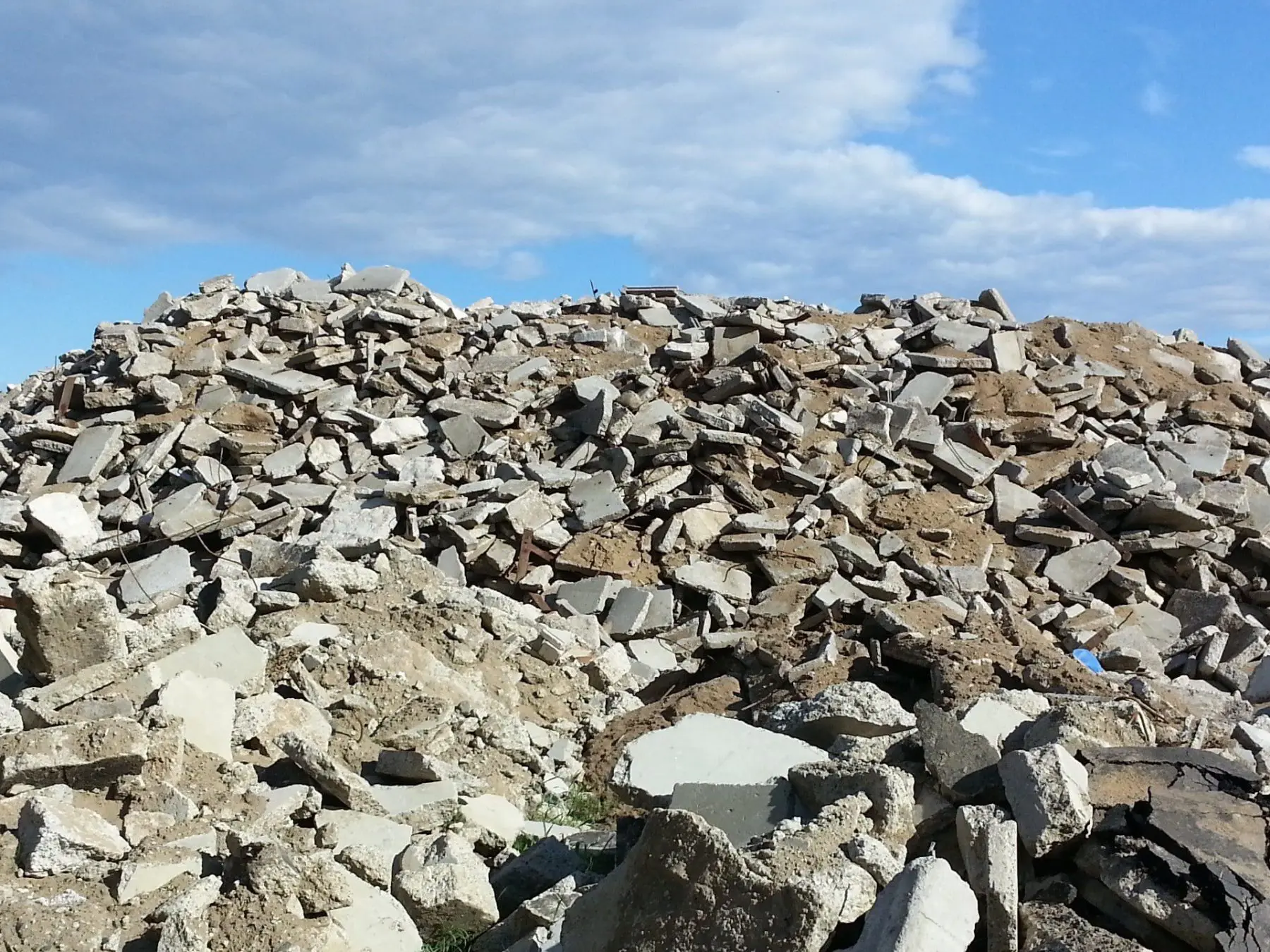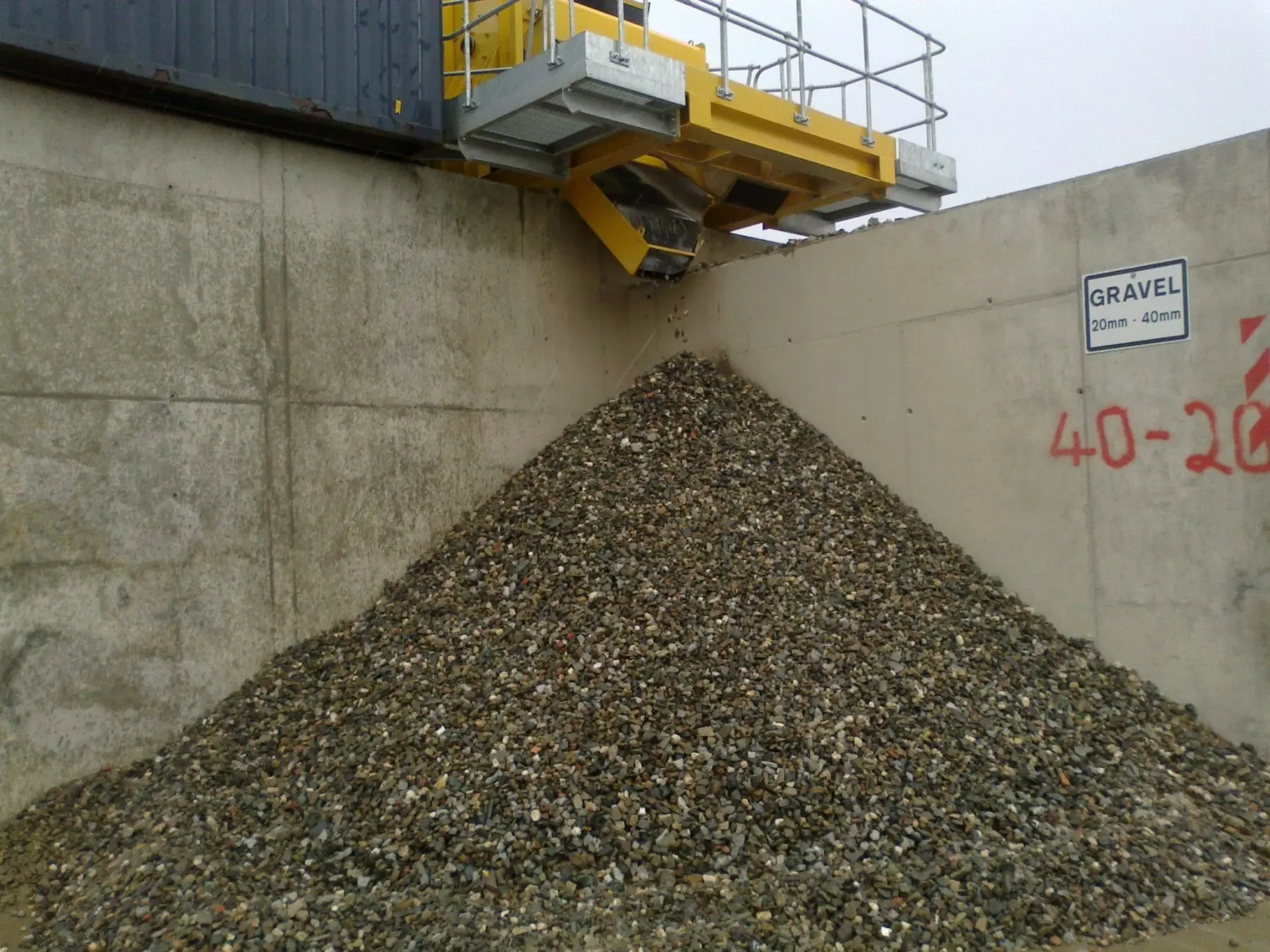World is growing and urbanising at a very fast rate and so is India. This effect of rapid urbanization is also seen in construction industry. However, with urbanisation comes the moral responsibility of sustaining the environment.
Concrete is the favourite choice as a construction material among civil engineers around the globe for decades. It is preferred for its better performance, longer life and low maintenance cost. To achieve rapid urbanisation every year smaller structures are demolished and newer and bigger ones are constructed.
These demolished materials (majority of which is usually concrete) are often dumped on land and is not reused for any purpose. This practice effects the fertility of land. With the wave of sustainability also impacting the construction industry, scientist and engineers throughout the world are looking for sustainable and reusable construction materials. One such material is recycled aggregate concrete.

Concrete Debris
Manufacturing of recycled Aggregate
Recycled aggregate concrete (RAC) is produced in three major steps:
- Evaluation of Source concrete:
The first step in production of RAC is to determine the quality of the source concrete. Properties and records of source concrete like strength, durability and composition are looked into for deciding the proper source concrete.
- Crushing of demolished concrete:
The simple process involves crushing concrete into specified size and quality (usually of size 20 mm – 50 mm).
- Removal of Contaminants:
Contaminants like reinforcing steel, foundation materials, asphalt concrete shoulders, soil, etc. are removed. It can be achieved by many methods including screening or air separation, demolition, using electromagnets, etc. Some contaminants depending on the use of RCA can also be processed separately.

20 to 40 mm recycled aggregate.
Advantages of Recycled Aggregate
- Reduces the amount of virgin aggregates to be created, hence less evacuation of natural resources.
- While being crushed into smaller particles a large amount of carbon dioxide is absorbed. This reduces the amount of CO2 is the atmosphere.
- Cost saving – few research studies have shown a significant reduction in construction costs if RAC is used.
- Conserves landfill space, reduces the need for new landfills and hence saving more costs.
- Creates more employment opportunities is recycling industry.
Disadvantages of Recycled Aggregate
- Downgrading of quality of concrete.
- Increase in water absorption capacity ranging from 3% to 9%
- Decrease in compressive strength of concrete (10-30%)
- Reduces workability of concrete.
- Lack of specifications and guidelines.
- Less durability of RAC, however few papers have shown an improvement in the durability by mixing it with special materials like fly ash.
Applications of Recycled Aggregate
Recycled Aggregate can be used in the following constructions
- Can be used for constructing gutters, pavements etc.
- Large pieces of crushed aggregate can be used for building revetments which in turn is very useful in controlling soil erosion.
- Recycled concrete rubbles can be used as coarse aggregate in concrete.
- Production of RAC also results in generation of many by-products having many uses such as a ground improvement material, a concrete addition, an asphalt filler etc.
Recycled Aggregate use in India
Currently India has a severe shortage of infrastructural facilities. Nonetheless India is constructing its foundation at a very fast rate. In this process of construction and reconstruction it has become the second largest producer of cement in the world only after China.
Though it is not even in top ten when it comes to production of recycled aggregate concrete. One of the main reason for it is the lack of proper source concrete in India. But if willed, the demand can be fulfilled with the help of Gulf Cooperation Council (GCC) countries like UAE, Saudi Arabia, etc.
Now as the govt. is gearing up for development of new cities, buildings, roads etc., the gates are wide open for production of more RAC.
Conclusion
Not only the problem of hundreds of thousands of tons of construction debris can be solved by recycling and reusing the building wastes, but also the issue of shortage of natural aggregates can be addressed.
Recycled aggregate concrete have several reliable applications. However, countries like India need to take some serious urgent measures to unleash the scope of RAC and if done so, concrete recycling will become one of the most important element for construction sustainability.





